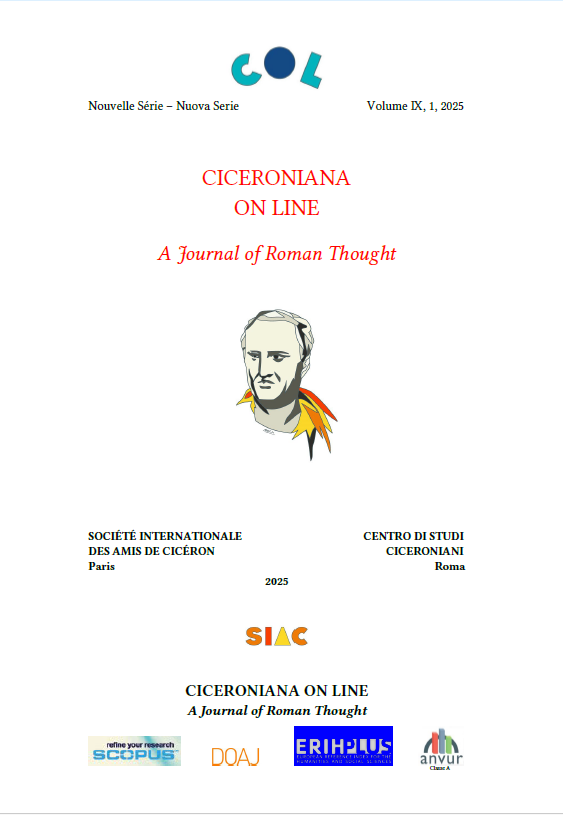The Dynamic Text: Cicero’s Tusculan Disputations and Beyond
Abstract
This article focuses on the evidence of five related Carolingian manuscripts (GVRKF) and what they reveal about the history of the Tusculans in the ninth century and earlier. Productive questions issue from three characteristics of the transmitted text: (1) its material organization; (2) corrections, variants, and notes entered by an active corrector (V2) in one of the ninth-century manuscripts, Vat. lat. 3246 (V); and (3) the potential presence of doublets. Connecting these three issues is an attitude towards Ciceronian speech that treats it as dynamic, fluid, and open. Persistent circular movements in Ciceronian discourse suggest that he himself viewed his speech in this way. And there is evidence of a similar attitude towards Ciceronian speech in the transmission of the Tusculans – in the material embodiment of the text, and in certain historical readers’ engagement with it. In the final portion of the article, a system of cross-references is proposed as a means to address the dynamism of Ciceronian speech. Cross-references are necessary both for a better understanding of Ciceronian methods and for making informed and more nuanced judgments about the textual-critical status of passages.
Downloads
Downloads
Published
How to Cite
Issue
Section
License

This work is licensed under a Creative Commons Attribution-ShareAlike 4.0 International License.
Authors who publish with this journal agree to the following terms:
- Authors retain copyright and grant the journal right of first publication with the work simultaneously licensed under a Creative Commons Attribution License that allows others to share the work with an acknowledgement of the work's authorship and initial publication in this journal.
- Authors are able to enter into separate, additional contractual arrangements for the non-exclusive distribution of the journal's published version of the work (e.g., post it to an institutional repository or publish it in a book), with an acknowledgement of its initial publication in this journal.


 Ciceroniana On Line is recognised by ANVUR (the National Agency for the Evaluation of the University System and Research) as a CLASS A journal for the Sciences of Antiquity, Philology, Literature and History of Art (
Ciceroniana On Line is recognised by ANVUR (the National Agency for the Evaluation of the University System and Research) as a CLASS A journal for the Sciences of Antiquity, Philology, Literature and History of Art ( The journal is included in DOAJ. The DOAJ listing of the journals is available at
The journal is included in DOAJ. The DOAJ listing of the journals is available at  The journal is indexed in
The journal is indexed in  The journal has been included in ERIH PLUS. The ERIH PLUS listing of the journals is available at
The journal has been included in ERIH PLUS. The ERIH PLUS listing of the journals is available at 
